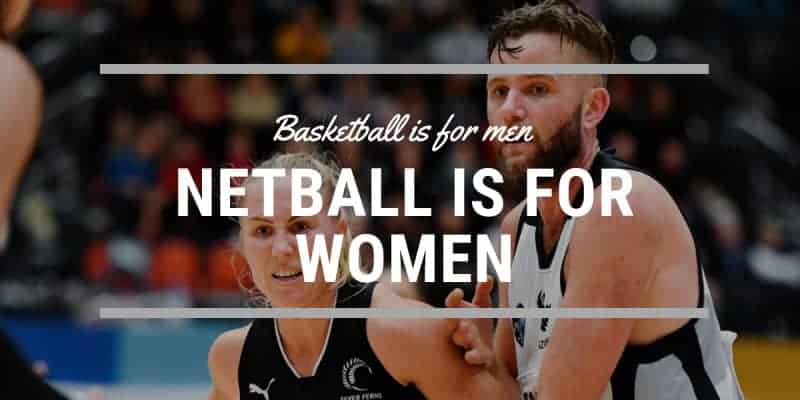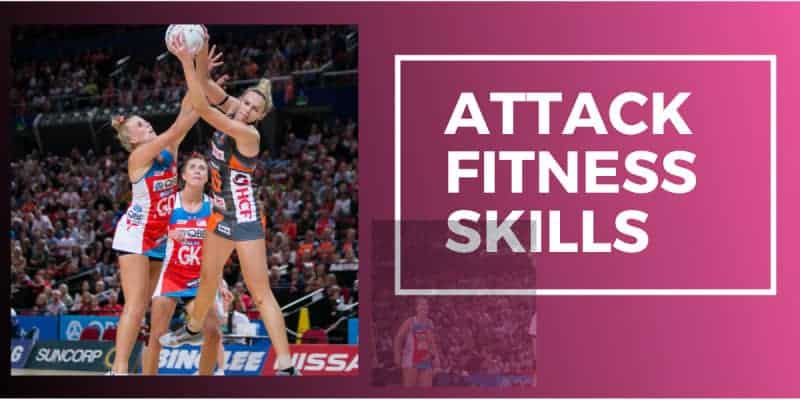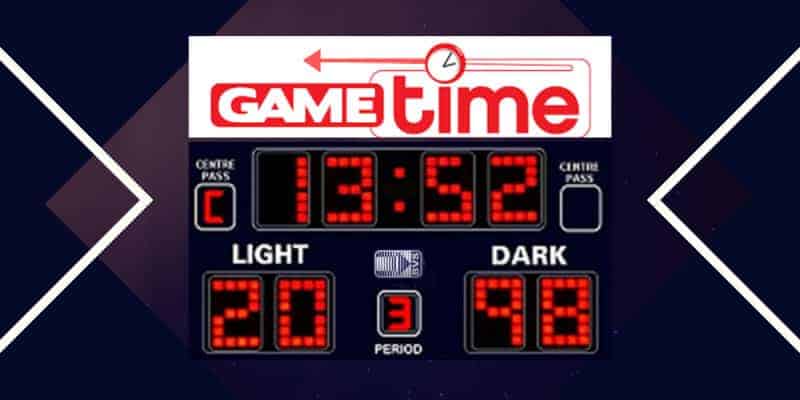
Basketball is one of the world’s highest-profile sports (and not just because of the height of its pro players) so if you can make it into one of the top global teams, then you can become seriously rich.Most of us, however, don’t stand a chance of making it as a pro basketball player and if you’re looking for a game to play just for fun and fitness, then its close relative, netball, may be a far better option.
Content Quick Jump
Basketball v netball, the similarities
Basketball and netball are both, essentially variations on the same idea. Players have to try to score goals by throwing a ball through a hoop owned by their opponents. Obviously, their opponents need to try to stop them either by defending their hoop or by attacking the other team’s hook so that the players are kept so busy with defence that they don’t have time to think about attack.

Basketball v netball, the differences
Visually, the single, biggest difference between basketball and netball is that basketball players are allowed to move with the ball, netball players are not. They can pivot (turn on the spot), but they have to stay in basically the same place for as long as they have the ball in their hands.
As a result of this, basketball is much more of a contact sport than netball. In fact, pro basketball can actually get quite rough as players push the boundaries of what is allowed in terms of physical strategies for getting the ball off a player. In netball, by contrast, no deliberate contact is permitted. ,Obviously when lots of people are moving about a confined area, people are going to bump into each other, so you can’t quite describe netball as a non-contact sport, but it’s certainly a much gentler one.
At a technical level, basketball games have five players on the court (with up to 7 on the bench) and, for the most part, any player can take any action they want. Netball games have 7 players on the court (with up to 3 on the bench) and players have defined roles with rules about what they can and cannot do. For example, the goal shooter is one of the two players allowed to shoot at the goal and they must stay in their opponent’s semi-circle and goal third. The games also use different types of ball which means the hoops used are also different.

Basketball is for men and netball is for women?
Traditionally basketball has been played mostly by men and netball has been played mostly by women. We’re guessing this is because basketball really is a much rougher sport than netball. Times change, however, and these days, you have women’s basketball teams and men playing netball. Note how that sentence was phrased. In basketball, men and women pretty much have to play separately, even at amateur level, because the game is so physical. In netball, men and women can play together, in a team or as opponents, and increasingly do, at least as amateurs.
Similarly, you can have a wide range of ages in an amateur netball team, from children around their early teens to active retirees. Basically as long as you can get about a court you can play netball! In fact, these days, there are even forms of netball designed to suit people with limitations on what they can do, for example there is “walking netball” for those with restricted mobility and disability netball for those with special needs.
Getting started in netball
We hope we’ve managed to convince you that netball is a game which can be enjoyed by everyone, not just people who are too short to play “grown-up” basketball. It’s great for all-around fitness and is particularly good for balance and coordination since you’ll usually need to run and jump and change position quickly. It’s also great for learning (and practising) “life” skills, like situational awareness, responding to change, decision-making and, of course, team working.
Netball gear
Parents rejoice, if your little one is at a stage where they want to try a bit of everything and you’re always having to buy them new sports gear, then try to aim them towards netball to give your wallet a bit of a breather. Basically all they’ll need is a pair of trainers and clothes they can run about and get sweaty in. The same goes for adults, so there’s really nothing to stop you giving it a go!
A quick point to note about your trainers. In the early days, basically any pair of trainers will do as long as they give decent grip and they’re clean. By that we mean really clean, including the soles. In other words, it’s a good idea to keep your netball trainers just for indoor use and, if at possible, buy ones which can go in a washing machine (and possibly even a tumble dryer) because you will get sweaty.

Fitness and skills
Pro-level netballers are some of the fastest, strongest and most agile sportspeople around and if you really want to take the game seriously, speed, strength and coordination will be the three main physical skills you’ll need.
Speed - is to get you where you’re needed as quickly as possible. Remember, the key point about netball is that whoever has the ball has to stand still, which means that the onus is on their teammates to get themselves somewhere they can be useful to the player holding the ball.
Strength - in netball you can be standing still one moment and moving at top speed the next and that takes some serious acceleration, which requires a lot of strength. You’ll also need to do a lot of jumping, which again, is basically about acceleration and, last but certainly not least, you’ll be doing a lot of throwing, in the form of passing the ball, because that’s basically what netball’s all about and that can take a surprising amount of strength.
Agility - you’ll be changing position all the time as netball games are fast-moving literally and figuratively. You’ll always be either trying to help your team or needing to dodge your opponents. Remember, even though netball not only explicitly forbids deliberate contact but also penalizes obstruction, your opponents can still use a wide range of tactics to make your life difficult and they will!
In addition to this wide range of physical skills, you will need to understand the strategy behind netball and where you fit into it and you will need to apply this knowledge to a fast-paced game.

Finding a team
High schools around the country often play netball and either have their own teams or know where to go to find them. If, however, you’re either the parent of a younger child or an adult wanting to play yourself then you could check out England Netball, Netball Scotland, Welsh Netball or Netball Northern Ireland, depending on where you live. They have listings of local, amateur clubs as well as connections to the netball leagues.
Taking it further - netball leagues
If you’re a good player and you have a competitive instinct then you might want to go further with your game and join a netball league. These are available at all levels from amateur to pro and the easiest place to go about looking for one is the Netball Leagues website. If you’re really good, then you might be able to go professional and while netball is still very much a niche sport, it’s prospects are looking good.
Netball has been accepted as an Olympic sport, although it has not yet been included in any games. It has, however, started to get more interest from brands (which is important for funding) and from the media, as it is very spectator-friendly since there is always something going on to keep people interested. The Vitality Netball Superleague is currently enjoying a very good following and will hopefully be a sign of things to come.

Netball FAQs
We’ve rounded up the five most common questions about netball and given you the answers!
What are the rules of netball?
If you want to play netball competitively, there are a lot of rules you will need to understand. For the most part however, there are only really five basic rules which you must understand.
- Only play where your position allows (we’ll explain more about this later).
- If you have the ball you can only take one step before passing (although you can then pivot) and you must pass within three seconds.
- If you are trying to intercept or defend the ball, you must stay at least 0.9 metres (3 feet) away from the player with the ball.
- You can use your hands to block a player off the ball provided that it is for the purpose of catching, deflecting or intercepting a pass, obtaining a rebound from an unsuccessful shot at goal, or signaling for a pass. You cannot mark a player with your arms out.
- You cannot deliberately use physical contact or behave in such a way which would make physical contact inevitable.
- What are the key points of a netball court?
A netball court is 30.5 metres (100 ft) long and 15.25 metres (50.0 ft) wide. The long sides are known as the sidelines and the short sides are known as the baselines. The long side is divided into three equal parts, with the two outer parts being defined as “goal thirds” and the middle part, separating them, known as the centre. Each baseline acts as the bottom part of a semicircular shooting area with a radius of 4.9m (16 ft). This contains the goal post and goal ring, (which perform the same function as a basketball hoop).
The goal posts are 3.05m (10.0 ft) in height and the goal rings on top of them have an internal diameter of 38cm (15 in) and have nets which hang down from them. Unlike in basketball, there is no blackboard, which makes aiming more challenging. The balls used in netball are usually made of leather or rubber, have a circumference of 68cm to 710cm (27 to 28 in), and weigh 397 to 454 grams (14.0 to 16.0 oz).

What are the player positions in netball and what do they do?
Possibly the easiest way to visualize player positions in netball is to think of them as pairs of opposites.
Goal Shooter (GS): The goal shooter’s job is to score goals, which they can only do from their opponent’s semicircle, although they can come out into their opponent’s goal third to assist their team. The goal shooter’s opposite is the goal keeper.
Goal shooters obviously need to have excellent shooting skills, which involves having steady hands, particularly good eyesight and the strength not only to throw but to deal with rebounds.
Goal Keeper (GK): The goal keeper’s job is to stop the other team’s goal shooter from scoring goals. They will generally try to stay within their own semicircle but can come out into their goal third. The goal keeper’s opposite is the goal shooter.
The goal keeper is the absolute last line of defence for their team and as such they need the focus to stay alert even though (all being well) there will be long stretches where they have nothing to do. They need the footwork to react to attacks and the strength to get the ball as far away from goal as possible.
Goal Attack (GA): The goal attack’s job is to assist the goal shooter, although they can also try to shoot themselves. They can move anywhere from their opponent’s semicircle to the centre but cannot enter their own goal third and their opposite is the goal defence.
The goal attack is generally one of the tallest players on the team, is good at shooting and excellent at passing.
Goal Defence (GD): The goal defence’s job is to protect their goal keeper (and therefore their goal), by making life difficult for the goal attack and hence the goal shooter. Their area of play stretches from their own semicircle to the centre third but they cannot enter their opponent’s goal third. Their opposite is the goal attack.
The goal defence is also usually one of the tallest players on the team because they need to be constantly on the look out for their opponent’s set-ups and react to them speedily. They also need good reflexes and strength to catch and deal with rebounds and excellent footwork.
Wing Attack (WA): The wing attack’s job is to get the ball from the centre into the hands of their team’s GA and/or GS. Their area of play is the opponent’s goal third (but not the semicircle itself) and the centre. The opposite of the wing attack is the wing defence.
The wing attack is usually the fastest player on the court. They are also often the most agile, with excellent footwork and passing skills.
Wing Defence (WD): The wing defence’s job is to do everything possible to make life as difficult as possible for the wing attack. Their area of play is their own goal third (but not the semicircle itself) and the centre. Their opposite is the wing attack.
The wing defence is fast, focused and fearless. They have to be ready and willing to use all legal tactics to hinder the wing attack.
Centre (C): As the name suggests the centre’s job is to act as the link between the offensive players and the defenders. In spite of what the name suggests, the centre can actually go anywhere on the court except the semicircles. The centre’s opposite is the opposing team’s centre.
The centre is usually the fittest player on the court and has great passing skills. They also have the ability to analyse the state of play and indicate what tactics the team should use.

How long is a netball game?
A whole netball game lasts an hour. It is divided into four quarters, each lasting 15 minutes.
How does netball strategy work?
As with the rules, if you decide to take netball seriously, there will be a whole myriad of strategy and tactics you need to learn and these will largely depend on your position. For getting started, however, there are only really ? strategic and/or tactical skills you need to understand (and develop) to keep on top of the game and the order in which you’ll probably need to learn (and apply them).
Following the game
As a beginner, your first task will generally be just to learn how to follow what’s going on. As you improve, you’ll be able to take this a step further and make educated guesses as to what your opponent is planning to do.
Finding the right position
The quicker you can work out what’s going on, the quicker you can work out what you need to do about in and in netball at least 80% of success in the game is determined by your ability to be in the right place at the right time. (Arguably this is a lot like life in general).
Getting your timing right
Once you understand what your opponent is planning and what you need to do about it (i.e. where you need to be), you then need to have the judgement to know exactly when to make your move. If you move too soon, your opponent may change tactics and continue their attack but if you move too late you may be unable to stop them in their tracks even though you knew what they were doing all along.
Communication
Netball really is a team game and communication is often key to success. Basically as an individual you will only be able to see a part of the game (literally and figuratively) so getting information from your teammates can fill in gaps in your knowledge. Likewise, as you improve, your teammates will increasingly rely on you to tell them what they need to know.
Skill selection
As you develop your netball skills, you will learn how to choose exactly what skill to use in any given situation. Sometimes, this choice will become pure instinct (for example experienced netball players never need to think about when to use a chest pass and when to use a shoulder pass) and sometimes it will be an active decision take as a response to game circumstances (for example, a player may choose to stop defending their “usual” player because someone else needs their help more).
Playing the player (or team)
At the highest levels of netball, both teams will be actively studying each other’s strengths and weaknesses to see what they need to fear and what they can exploit. At the very highest levels, psychology may become a factor, for example, an opponent may try to frighten a defender into moving too early or too late, or moving into the wrong position.
Fitness fanatic and always on the move. Carly is a certified personal trainer and currently teaches spin class, Zumba, and Body Pump amongst a few others. Carly has a PhD/MSc in Sport and Exercise Nutrition so she really knows her stuff and has worked in fitness and health all her life. We are honoured to have her as a member of the team. Carly has an infectious laugh, loves terrible, terrible jokes and her dog Trevor and often works with a local mental health charity


![How to Get Into Netball – [Complete Professional Guides]](https://fitnessauthority.co.uk/wp-content/uploads/thumbs_dir/how-to-get-into-the-gym-omspdz5xhw8jmlo7642e2wexfqufx9zrntq4afde7w.jpg)










Why is it so hard for my 9 yr old granddaughter to get in to Netball ?? Weigh tooooooo much red tape
thank you that will help my and my team alot with out attack and deffents as well as staying on our feet in other words (footwork)
thankyou.this will help my girls focus on their futures.